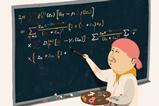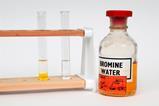Science teacher Dan Beech reveals which technologies have improved his teaching this year

New technology has arguably had a more important role in education than ever in 2020, with many of us looking to new devices or software that we may not have heard of or used before.
However, merely introducing a new piece of technology to the classroom will not automatically lead to an improvement in pupil’s learning. For example, we can probably all think of a time when a new and exciting piece of technology was introduced to us; often we use it for a bit and then suddenly it disappears, never to be heard of again. Technology may fail to provide improvements for many other reasons too: poor implementation, cost, staff workload, and suitability for the school to name a few. So how can we ensure we are reaping the benefits that new technology has to offer?
Last year, the EEF produced an impressive guidance report, Using digital technology to improve learning, which makes it clear that we should be asking one particular question: how can we integrate suitable technology in response to a specific need? With this in mind, below are some of the forms of technology that myself and my colleagues are currently using in our practice, some of which have been born out of and enhanced by lockdown teaching, to answer needs brought about by social distancing.
1. Visualisers
We are extremely lucky in our school; all teachers have access to a visualiser. Visualisers use a camera and enable you to show things to your class on your interactive whiteboards. They can be used to live model your thinking, show worked examples, dual code, record videos and Zoom. Visualisers are also a great way to show a practical demonstration clearly on the large screen, removing the need for pupils to gather round. Chemistry teacher Emily Seeber has some more ideas for how to use your visualiser for other aspects of the chemistry curriculum.
We are extremely lucky in our school; all teachers have access to a visualiser. Visualisers use a camera and enable you to show things to your class on your interactive whiteboards. They can be used to live model your thinking, show worked examples, dual code, record videos and Zoom. Visualisers are also a great way to show a practical demonstration clearly on the large screen, removing the need for pupils to gather round. Chemistry teacher Emily Seeber has some more ideas for how to use your visualiser for other aspects of the chemistry curriculum: rsc.li/3lxoTkc.
2. Simulations, virtual experiments and video explanations
Practicals in the current climate have not necessarily been the easiest to carry out, if at all. Simulations, screen experiments and videos have all helped to supplement and sometimes enhance provision. For example, PhET has lots of useful chemistry simulations. You can use them in the physical classroom or post them in your VLE, whether that’s Moodle or Google Classroom, to keep up and consolidate students’ practical learning.
With my classes, I particularly like this one showing the Rutherford scattering experiment, which certainly helped my pupils’ understanding. Also, when teaching titrations, I posted a link to the RSC’s titration screen experiment on Google Classroom for pupils to consolidate what we had done in class. This is a particularly useful simulation which allows them to practice the steps involved in a titration and work though example questions independently. I then quizzed them on their knowledge in a subsequent lesson.
YouTube clips of practicals have also been valuable, such as those from Malmesbury Education and Periodic Videos, to name a few. The RSC has also compiled some practical videos for 14–16 and 16–18 topics to use for revision or consolidation, as a flipped learning tool before live practical work, or as a remote teaching aid.
With my classes, I particularly like this one showing the Rutherford scattering experiment (bit.ly/36xopGw), which certainly helped my pupils’ understanding. Also, when teaching titrations, I posted a link to the RSC’s titration screen experiment (rsc.li/3lyUFNX) on Google Classroom for pupils to consolidate what we had done in class. This is a particularly useful simulation which allows them to practice the steps involved in a titration and work though example questions independently. I then quizzed them on their knowledge in a subsequent lesson.
YouTube clips of practicals have also been valuable, such as those from Malmesbury Education and Periodic Videos to name a few. The RSC has also compiled some practical videos for 14–16 and 16–18 topics (rsc.li/36y50Wh) to use for revision or consolidation, as a flipped learning tool before live practical work, or as a remote teaching aid.
3. Online learning platforms
Oak National Academy was born out of the first national lockdown and has formed part of our home learning strategy this year. We assign each year group a weekly Oak lesson for home learning through Google Classroom as there is a great bank of 11–14 and 14–16 chemistry lessons on the platform. The lessons have also been convenient for creating self-isolation resources should pupils need to, which has definitely reduced teacher workload.
We have also found Tassomai a great retrieval tool that we are using to help support our struggling pupils.
4. Online textbooks and revision guides
Lots of textbooks have an accompanying online version. Giving students a chemistry textbook each to take home would be almost impossible, so the option to provide them with an online edition is a suitable alternative. These have been useful for pre-learning and offering students a chance to consolidate their learning.
5. Google Classroom and Google Forms
Google Classroom is our platform for home learning and online teaching. We use it to post pre-learning prior to lessons as well as wider reading, such as relevant news articles. One of my colleagues (from the art department) has written a really useful piece on how to incorporate pre-recorded videos and live modelling into lessons. Videos can also be posted to Google Classroom for any students who are self-isolating, whether that’s whole lessons delivered with Powerpoints, or smaller chunks of content.
Google Forms has formed a part of our assessment strategy. You can easily make quizzes and provide instant and useful feedback to pupils. Though, creating good multiple choice quizzes is not always an easy task and I have found Kristy Turner’s tips invaluable. Google Forms makes it really easy to see where most of your class went wrong so that you can then adapt your teaching accordingly. It also reduces teacher workload in terms of saving time on marking.
Google Classroom is our platform for home learning and online teaching. We use it to post pre-learning prior to lessons as well as wider reading, such as relevant news articles. One of my colleagues (from the art department) has written a really useful piece on how to incorporate pre-recorded videos and live modelling into lessons (LINK). Videos can also be posted to Google Classroom for any students who are self-isolating, whether that’s whole lessons delivered with Powerpoints, or smaller chunks of content.
Google Forms has formed a part of our assessment strategy. You can easily make quizzes and provide instant and useful feedback to pupils. Though, creating good multiple choice quizzes is not always an easy task and I have found Kristy Turner’s tips invaluable (rsc.li/2VrYo5j). Google Forms makes it really easy to see where most of your class went wrong so that you can then adapt your teaching accordingly. It also reduces teacher workload in terms of saving time on marking.
Get the best out of Google Classroom
Check out Dan’s five smart tips to make the most of Google Classroom with your classes.
Check out Dan’s five smart tips to make the most of Google Classroom with your classes: rsc.li/3mARC9s.
Dan Beech














No comments yet